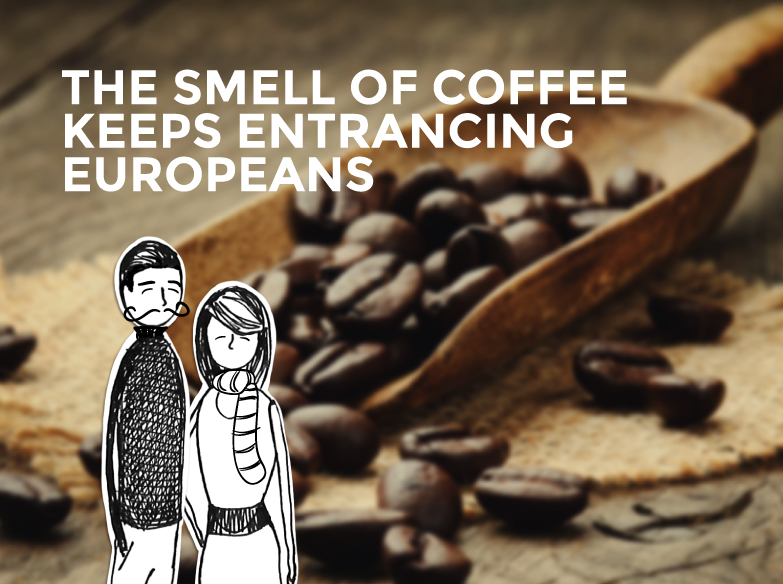- Latin America and the Caribbean is the main coffee producing region, accounting for 57% of the world’s total
- Each European citizen consumes an average of 4.67 kg of coffee per year
Exports
Rules for exporting coffee to the European Union
Latin America and the Caribbean is the main coffee exporting region while the European Union is the leading market for this popular beverage. There are general and specific export requirements that apply equally to the 28 members of the Union.

HIGHLIGHTS
According to history, the first coffee plants were brought to America by Dutch settlers wishing to cultivate it in what today is Suriname. However, according to the Proexport Colombia website, “the French decided to send a coffee plant to their colonies in America (Martinique and French Guyana) with French Captain Gabriel De Clieu, who experienced countless adventures to enable the plant to arrive alive to its destination. This only plant was the origin of the extensive coffee plantations in Latin America.”
In the three hundred years separating those humble beginnings until today, the world of coffee in Latin America has substantially changed. On the one hand, this strong flavored dark liquid has gone from being a local beverage to a global infusion. On the other hand, the Latin America and the Caribbean (LAC) region has become an exporting power of this beverage’s raw material: according to the Food and Agriculture Organization of the United Nations (FAO), LAC is the main coffee producing region in the world, with a total production of approximately 67 million bags per year, 57% of the world’s total.
Europe: the main market
Although a considerable amount of coffee is consumed in Latin America, a major part of production is only available for export. Where to? Well, according to the figures provided by the International Trade Center’s Coffee Guide, the largest coffee consuming nation is the United States, with 23% of the market, followed by Germany with 10%.
The European Union accounts for 44% of global coffee consumption, thereby becoming the main market in the world
However, in fact, the most important market in the world for coffee is the European Union (EU) that has standardized rules for importing this product (and once it enters it can circulate freely among the different countries of the Union). In addition to Germany’s 10% accumulated consumption, the other EU countries consume a fair amount of coffee: France and Italy, for example, each account for 6% of the world market. In total, the sum consumed by all EU countries accounts for 44% of the global coffee market.
According to figures reported by the International Coffee Association, each European citizen consumes a total average of 4.67 kilos of coffee per year. In order to satisfy this demand, Europe imports 46.2 million bags of green coffee, 0.7 million bags of roasted coffee and 2 million bags of soluble coffee per year.
Requirements for exporting to the European Union
Rules from the 28 EU member countries regarding the import of food products in general, and coffee in particular, are mostly harmonized. This is why the producer who wishes to see his coffee beans reach the typical Parisian cafés can also, without undue delay, have his product sold in Rome, Frankfurt or Barcelona.
So, what are the common rules that must be met by coffee producers to enter the European market?
In the first place, the product must meet certain EU sanitary and safety requirements that prohibit the sale of food that is dangerous to health or unfit for human consumption. In this regard, the EU has strict sanitary rules that must be met at all stages, from production to consumption. EU authorities also have several control powers and sellers must be able to identify each member of the production chain.
Within this set of rules some are very specific, such as those regulating pesticides that can be used in production. For instance, the EU website mentions that,”1 kg of coffee beans may not contain more than 1 mg of Carbofuran in order to enter the EU market.”
In second place, coffee sold in the European Union must follow certain labeling rules. In other words, the sales package must contain the following information:
- Name under which the product is sold. The EU explains that, “Unless specific EU or national provisions apply, the name should be a customary name or a description. A trademark, brand name or fancy name may be used but in addition to the generic name.”
- List of ingredients, including additives, unless the name of the food is identical to the name of the ingredient. Any substances that might cause allergic reactions must be clearly indicated.
- Net quantity of pre-packaged food products.
- Date of expiry.
- Name or business name and address of the manufacturer, packager, or seller established in the EU.
- Place of origin or provenance, where its omission could be misleading for consumers.
- Special conditions for storage or use.
- Lot marking.
Finally, there are certain specific rules regulating the labeling of different types of coffee (coffee extract, soluble coffee, instant coffee or decaffeinated coffee, etc.) For instance, the EU website explains that “The term "concentrated" may only appear on the label if the coffee-based dry-matter content is more than 25% by weight. The term "decaffeinated" must appear if the anhydrous caffeine content does not exceed 0.3% by weight of the coffee-based dry matter. This information must be within the same field of vision as the sales description.”
BIBLIOGRAPHY
- International Trade Center. Coffee Guide.
- Food and Agriculture Organization of the United Nations, Medium-term prospects for agricultural commodities, 2004.
- Proexport Colombia, Propagación del Café en el Mundo.
- European Union website, Export Helpdesk, Requirements for exporting coffee to Europe
- European Union website, Export Helpdesk, Sanitary and phytosanitary requirements


Follow Us